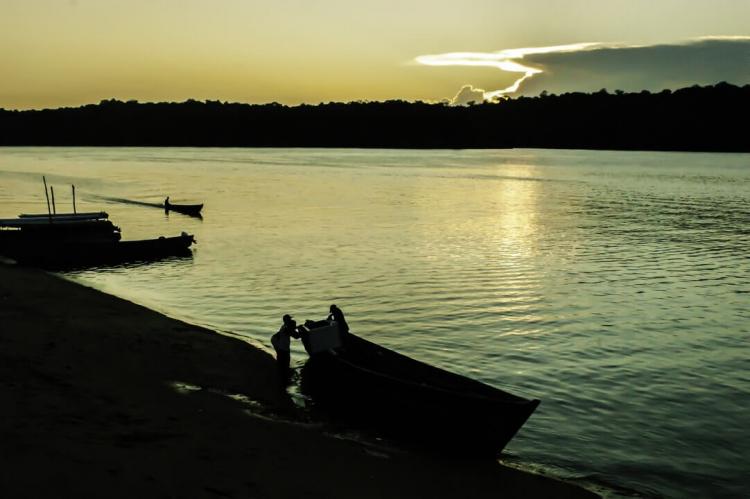Cabo Orange National Park (Brazil)
Cabo Orange National Park is located in Amapá state, on the coastline of northern Brazil and close to the border with French Guiana. The park is characterized by flooded grasslands, unique in the Amazon region, and by mangroves, which act as fish nurseries.
Cabo Orange National Park
Cabo Orange National Park is located in Amapá state on the coastline of northern Brazil, within the municipalities of Calçoene and Oiapoquein and close to the border with French Guiana.
French Guiana borders the National Park to the north, the Uaçá and Juminã indigenous lands and, in a short stretch, the Vila Velha Settlement Project to the west and the Atlantic Ocean to the east.
Created in 1980, the National Park has an area of 657,318 ha (1,624,270 acres). It is a continental and marine park since approximately 200,000 ha (494,000 acres) of its area is in ocean waters. It is administered by the Chico Mendes Institute for Biodiversity Conservation (ICMBio).
Cabo Orange National Park contains mangroves, flooded fields, clean fields interspersed with savannahs, flooded forests (also called floodplains), upland forests, and marine ecosystems.
The National Park is characterized by periodically and permanently flooded grasslands, unique in the Amazon region, and by its mangroves, which act as "fish nurseries" and are vital for maintaining some of Brazil's most important fisheries.
Cabo Orange National Park's primary objective is to preserve natural ecosystems of great ecological relevance and scenic beauty. In addition, the designation enables scientific research, the development of educational activities and environmental interpretation, and recreation in contact with nature and eco-tourism.
Cabo Orange National Park adjoins the Amapá State Forest, a sustainable use conservation unit established in 2006 covering 2,369,400 ha (5,855,000 acres). The park is part of the Amapá Biodiversity Corridor, created in 2003. The Amazon Region Protected Areas Program supports the park.
Flora and Fauna
The park is rich in biodiversity and supports globally threatened species. To date, 358 species of birds, 19 species of plants, and 54 species of mammals have been identified here.
Protected species in the park include the giant armadillo (Priodontes maximus), giant anteater (Myrmecophaga tridactyla), jaguar (Panthera onca), oncilla (Leopardus tigrinus), black-bearded saki (Chiropotes satanas), green sea turtle (Chelonia mydas), smalltooth sawfish (Pristis pectinata), West Indian manatee (Trichechus manatus), and Amazonian manatee (Trichechus inunguis).
